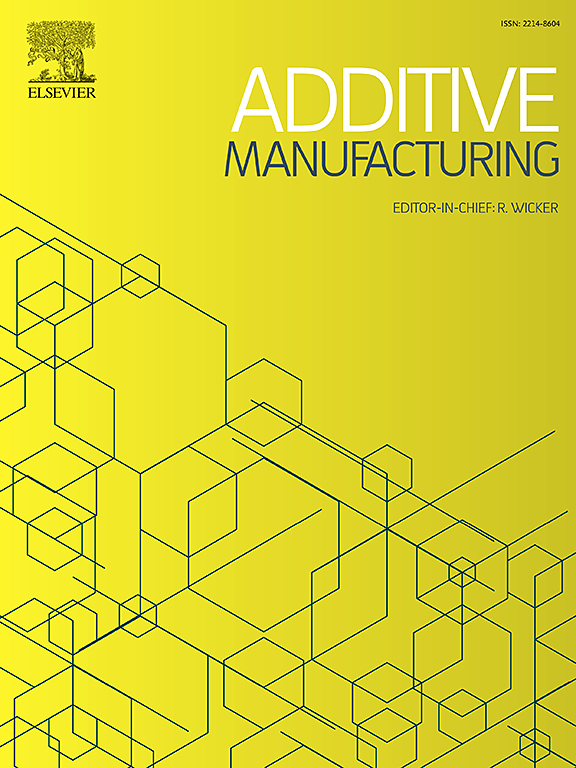D-ECOmposer: Sustainable part decomposition for additive manufacturing using machine learning based life cycle assessment
IF 10.3
1区 工程技术
Q1 ENGINEERING, MANUFACTURING
引用次数: 0
Abstract
Additive Manufacturing (AM) has garnered significant attention due to its potential for sustainable production. To further enhance this potential, Design for Additive Manufacturing (DfAM) methodologies are frequently employed. However, traditional design approaches often fall short in addressing the inherent limitations of AM, such as build size constraints, extended lead time, and the necessity for support structure. However, due to these limitations, part decomposition (PD) has recently gained prominence as a viable solution. While the benefits of PD might be less pronounced if a model can be produced in its entirety on a single AM device, this study assumes scenarios where the model is too large for the build space of the AM device, making decomposition necessary. This study proposes a grid-based PD method that utilizes machine learning-based Life Cycle Assessment (LCA) to minimize environmental impact. The experimental data in this study were collected and analyzed based on the FDM(Fused deposition modeling) process. Initially, a predictive model is developed to quickly and accurately estimate the carbon footprint of a design candidate based on the geometric characteristics of a 3D model. This predictive model is subsequently employed as the objective function in the optimization of PD using a genetic algorithm (GA). To validate the efficacy of the proposed method, experiments were conducted on four test models using FDM. While this study focuses on FDM, the proposed methodology has potential applicability to other AM processes. The experimental results clearly demonstrate that the proposed method outperforms traditional empirical approaches in reducing the carbon footprint.

D-ECOmposer:使用基于机器学习的生命周期评估进行增材制造的可持续部件分解
增材制造(AM)由于其可持续生产的潜力而引起了极大的关注。为了进一步增强这种潜力,经常采用增材制造设计(DfAM)方法。然而,传统的设计方法往往无法解决增材制造的固有限制,例如构建尺寸限制、延长的交货时间和支持结构的必要性。然而,由于这些限制,零件分解(PD)最近作为一种可行的解决方案获得了突出的地位。虽然如果可以在单个AM设备上完整地生成模型,PD的好处可能不那么明显,但本研究假设模型对于AM设备的构建空间来说太大,因此需要分解。本研究提出了一种基于网格的PD方法,该方法利用基于机器学习的生命周期评估(LCA)来最大限度地减少环境影响。本研究的实验数据是基于FDM(熔融沉积建模)工艺收集和分析的。首先,基于3D模型的几何特征,开发一个预测模型来快速准确地估计候选设计的碳足迹。将该预测模型作为目标函数,应用遗传算法进行PD优化。为了验证该方法的有效性,利用FDM对四个测试模型进行了实验。虽然本研究侧重于FDM,但所提出的方法对其他AM过程具有潜在的适用性。实验结果清楚地表明,该方法在减少碳足迹方面优于传统的经验方法。
本文章由计算机程序翻译,如有差异,请以英文原文为准。
求助全文
约1分钟内获得全文
求助全文
来源期刊

Additive manufacturing
Materials Science-General Materials Science
CiteScore
19.80
自引率
12.70%
发文量
648
审稿时长
35 days
期刊介绍:
Additive Manufacturing stands as a peer-reviewed journal dedicated to delivering high-quality research papers and reviews in the field of additive manufacturing, serving both academia and industry leaders. The journal's objective is to recognize the innovative essence of additive manufacturing and its diverse applications, providing a comprehensive overview of current developments and future prospects.
The transformative potential of additive manufacturing technologies in product design and manufacturing is poised to disrupt traditional approaches. In response to this paradigm shift, a distinctive and comprehensive publication outlet was essential. Additive Manufacturing fulfills this need, offering a platform for engineers, materials scientists, and practitioners across academia and various industries to document and share innovations in these evolving technologies.
 求助内容:
求助内容: 应助结果提醒方式:
应助结果提醒方式:


